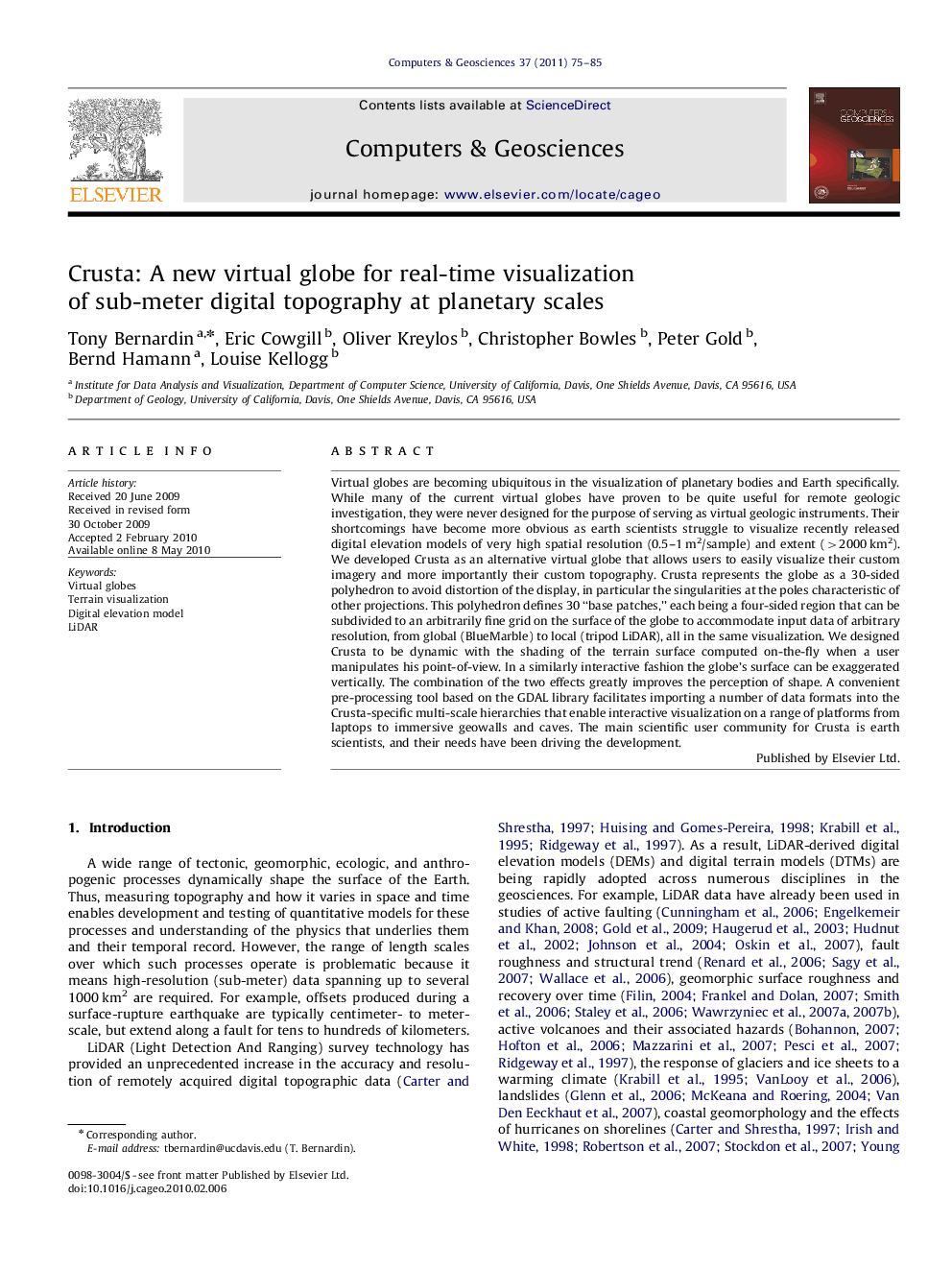| Article ID | Journal | Published Year | Pages | File Type |
|---|---|---|---|---|
| 507976 | Computers & Geosciences | 2011 | 11 Pages |
Virtual globes are becoming ubiquitous in the visualization of planetary bodies and Earth specifically. While many of the current virtual globes have proven to be quite useful for remote geologic investigation, they were never designed for the purpose of serving as virtual geologic instruments. Their shortcomings have become more obvious as earth scientists struggle to visualize recently released digital elevation models of very high spatial resolution (0.5–1 m2/sample) and extent (>2000 km2). We developed Crusta as an alternative virtual globe that allows users to easily visualize their custom imagery and more importantly their custom topography. Crusta represents the globe as a 30-sided polyhedron to avoid distortion of the display, in particular the singularities at the poles characteristic of other projections. This polyhedron defines 30 “base patches,” each being a four-sided region that can be subdivided to an arbitrarily fine grid on the surface of the globe to accommodate input data of arbitrary resolution, from global (BlueMarble) to local (tripod LiDAR), all in the same visualization. We designed Crusta to be dynamic with the shading of the terrain surface computed on-the-fly when a user manipulates his point-of-view. In a similarly interactive fashion the globe's surface can be exaggerated vertically. The combination of the two effects greatly improves the perception of shape. A convenient pre-processing tool based on the GDAL library facilitates importing a number of data formats into the Crusta-specific multi-scale hierarchies that enable interactive visualization on a range of platforms from laptops to immersive geowalls and caves. The main scientific user community for Crusta is earth scientists, and their needs have been driving the development.
